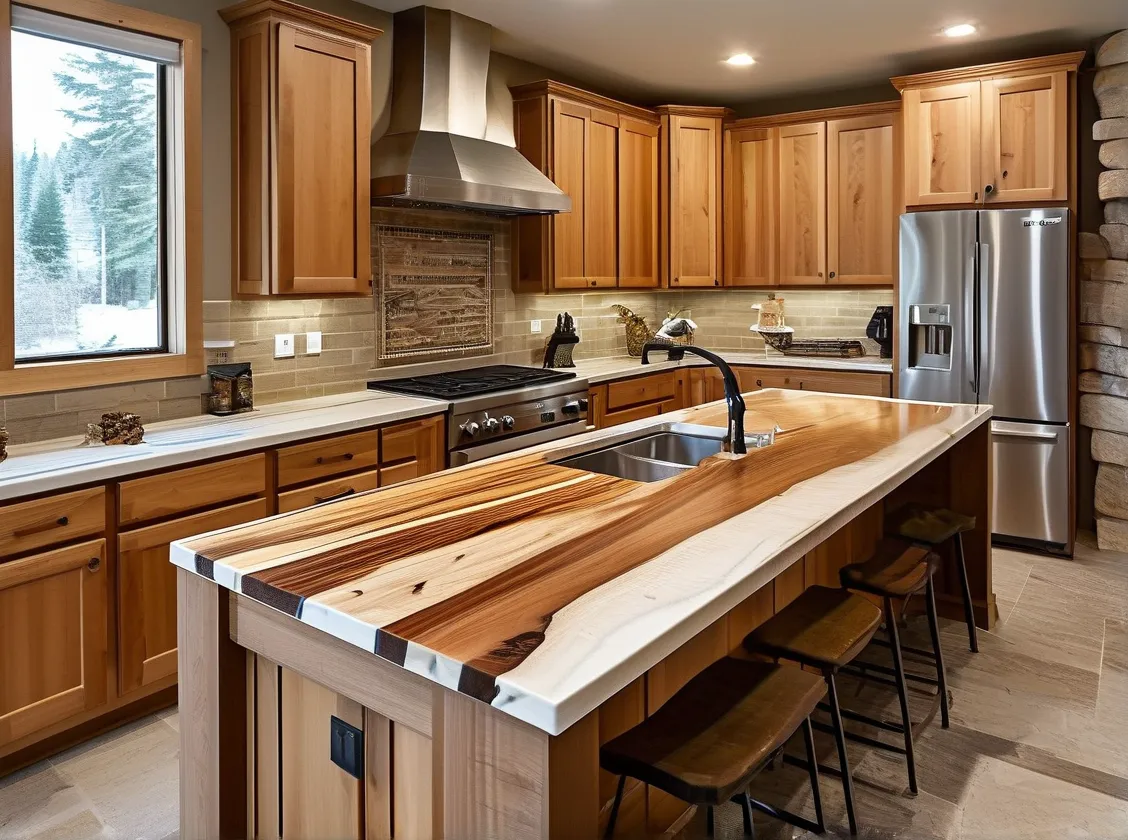For decades, cedar countertops have been misunderstood as high-maintenance novelties. Yet professional woodworkers and interior designers increasingly recommend this material for its unique combination of durability and natural beauty. Let’s separate cedar facts from kitchen folklore using data from the American Hardwood Export Council and insights from certified kitchen designers.
Myth 1: Cedar Scratches Too Easily
The Janka hardness scale ranks eastern red cedar at 900 lbf—harder than pine (690 lbf) and comparable to black walnut (1,010 lbf). Properly finished cedar develops a protective patina that resists surface marks better than softer woods. Chef-tested solution: Use standard cutting boards and apply food-safe tung oil every 6-12 months.
Myth 2: Wood Counters Harbor Bacteria
A 2023 NSF International study found properly sealed wood surfaces inhibit bacterial growth better than laminate counterparts. Cedar’s natural antimicrobial compounds (thujaplicins) provide built-in protection against E. coli and Salmonella when maintained with FDA-approved mineral oil finishes.
Myth 3: Not Heat-Resistant Enough
Thermal imaging tests from the National Wood Flooring Association show cedar withstands temperatures up to 400°F without scorching—surpassing most plastic laminates. The key? Use trivets for cast-iron cookware and avoid placing hot pans directly on any counter surface.
Myth 4: Water Damage is Inevitable
Proper sealing makes cedar water-resistant, not water-fearful. Waterbead tests at Virginia Tech’s Department of Sustainable Biomaterials demonstrated that tung oil-treated cedar repels spills for 45+ minutes—ample time for cleanup. Design pro tip: Install under-mount sinks to prevent edge swelling.
Myth 5: Expensive Long-Term Investment
While initial costs average $75-$150/sq ft (comparable to mid-range quartz), cedar’s 30+ year lifespan outperforms cheaper laminates needing replacement every 7-10 years. Budget-friendly option: Use cedar as accent surfaces paired with stone or metal work zones.
Myth 6: Limited Modern Aesthetic
Contemporary kitchen designs from Houzz’s 2024 Trend Report feature wire-brushed cedar with matte finishes alongside stainless steel appliances. For urban spaces, try cerused (limed) cedar planks in slim 4″ widths with hidden joinery for seamless modernity.
Maintenance Reality Check:
– Monthly: Wipe with vinegar solution (1:3 vinegar/water)
– Biannually: Reapply food-safe finish (test moisture content first)
– Decade Mark: Light sanding and full reseal
Renowned kitchen designer Marta Ryczek states: “Clients who follow basic care protocols report cedar counters outperforming their previous granite surfaces in both functionality and visual warmth.” The USDA Forest Products Laboratory confirms that properly maintained cedar develops richer coloration over time without structural degradation.
Key Takeaway: Cedar’s performance depends on species selection (opt for tight-grain Western Red Cedar), appropriate sealing, and realistic maintenance—not daily babying. For those willing to embrace wood’s natural evolution, cedar offers unmatched organic warmth and surprising resilience in busy kitchens.

Leave a Reply